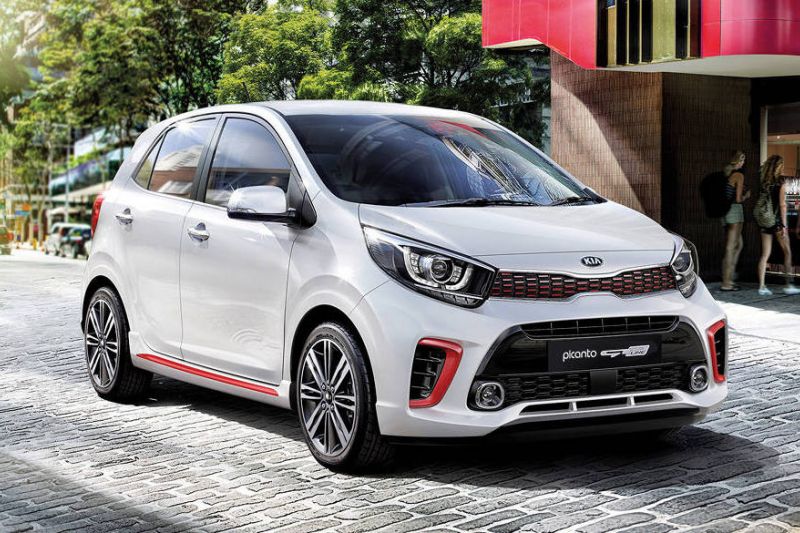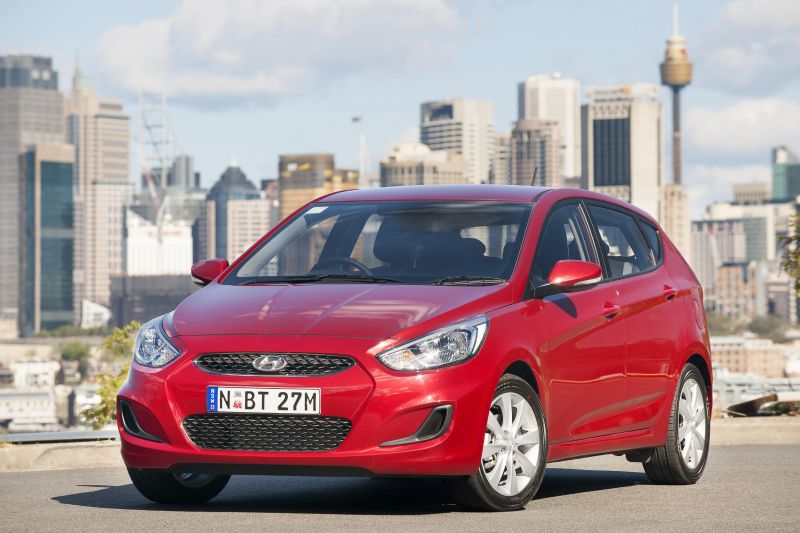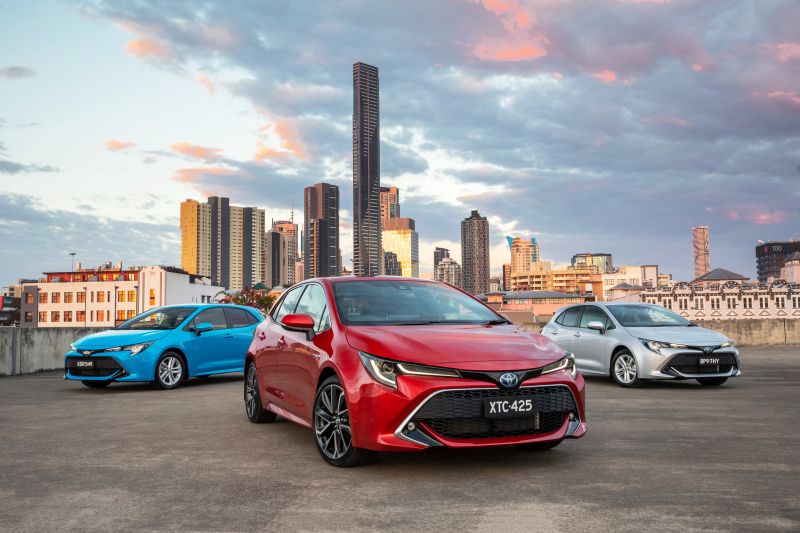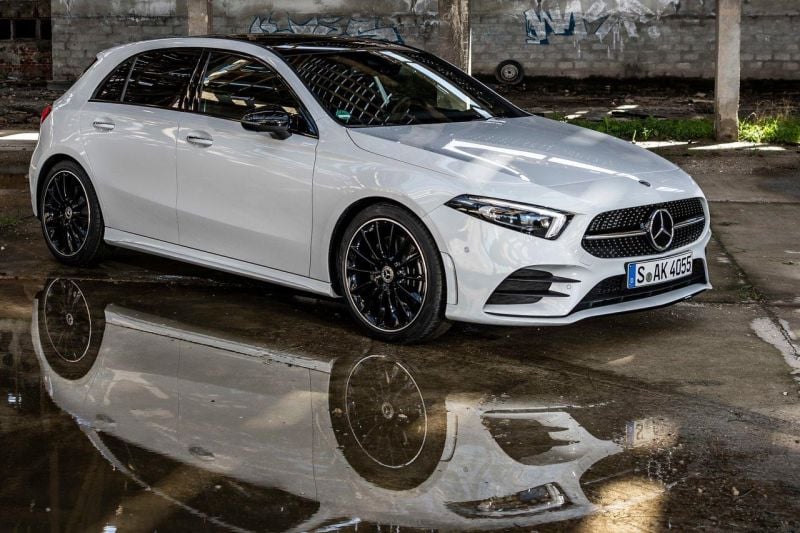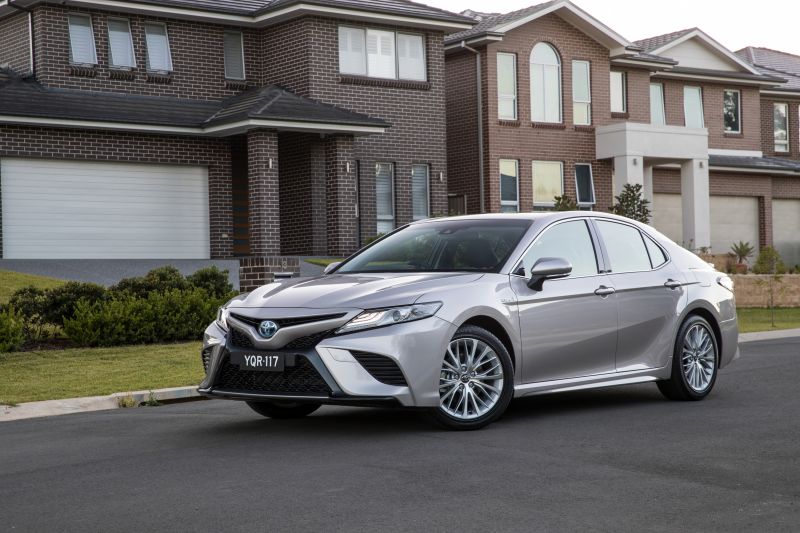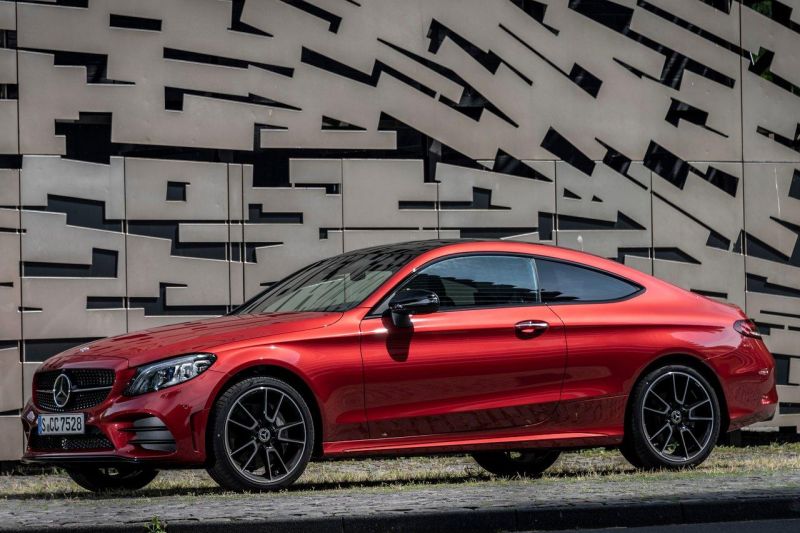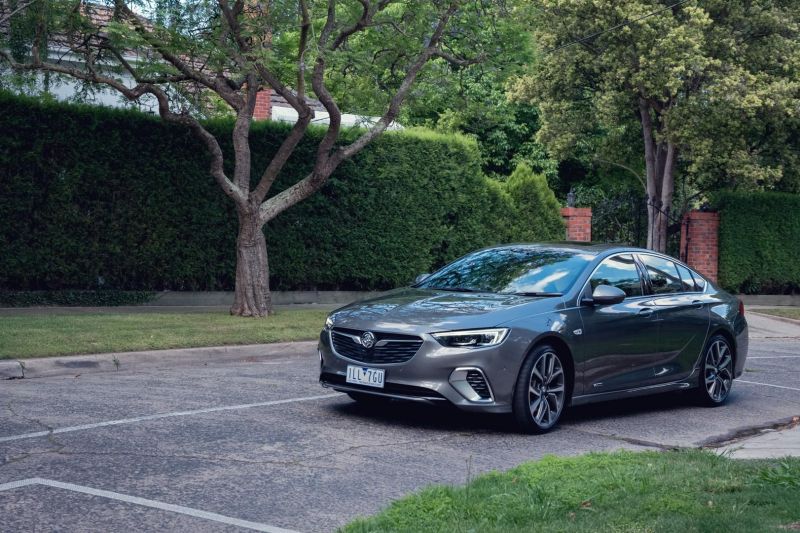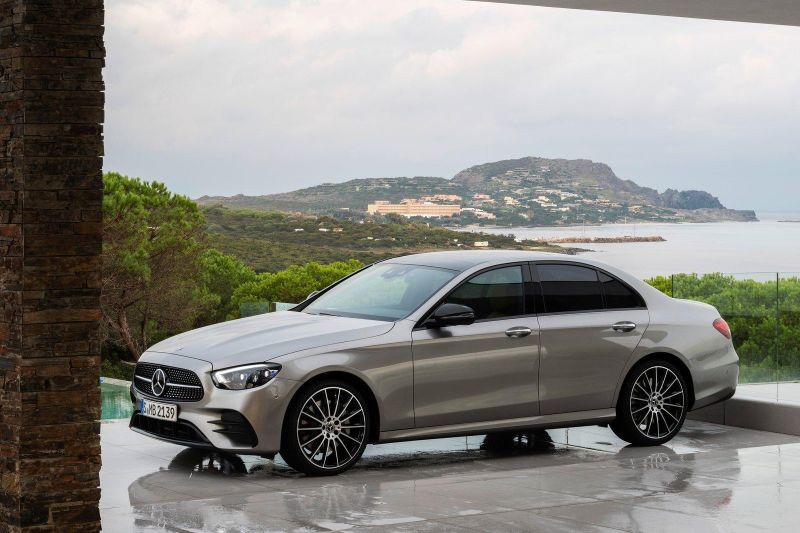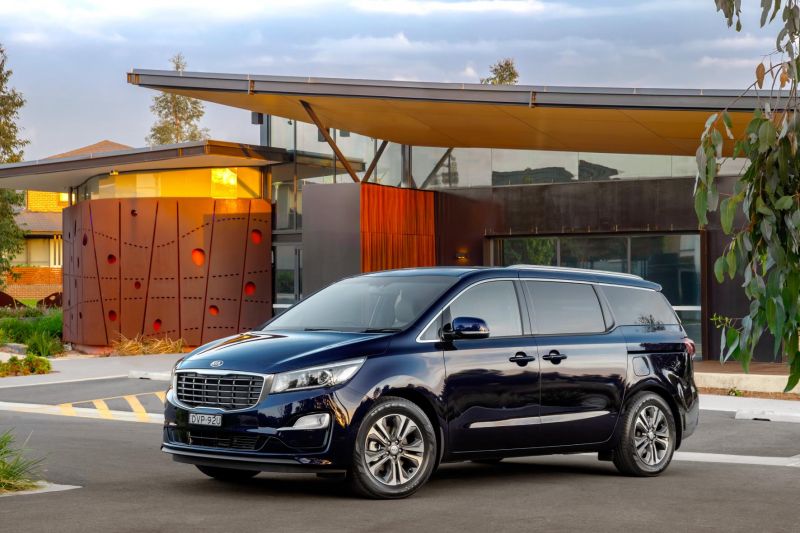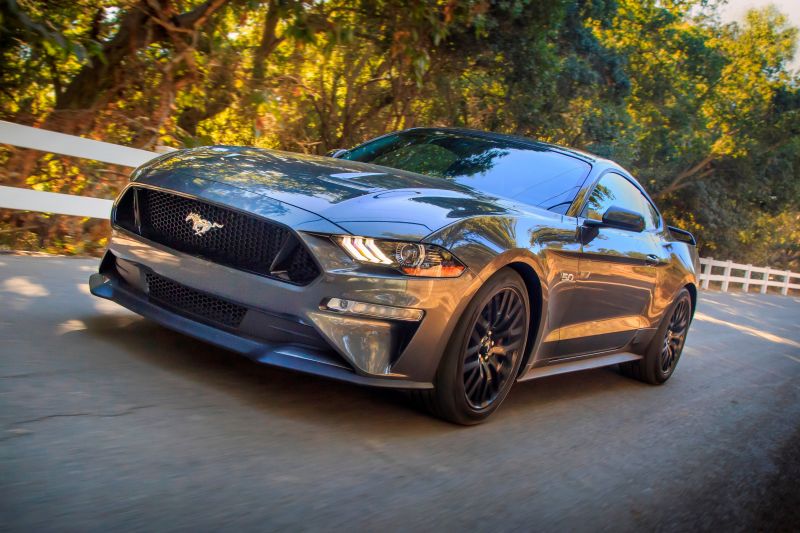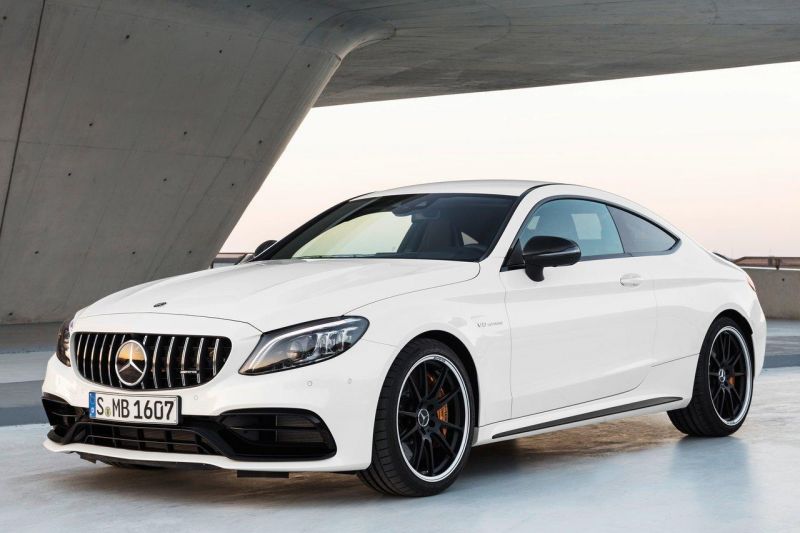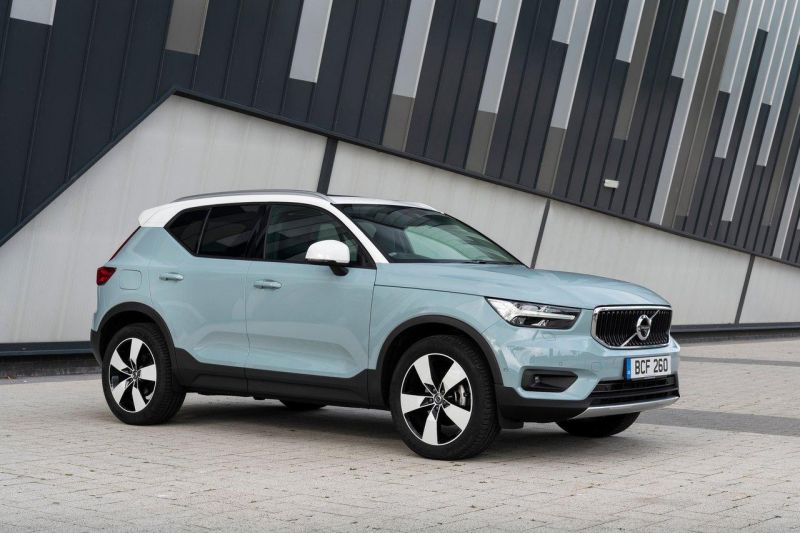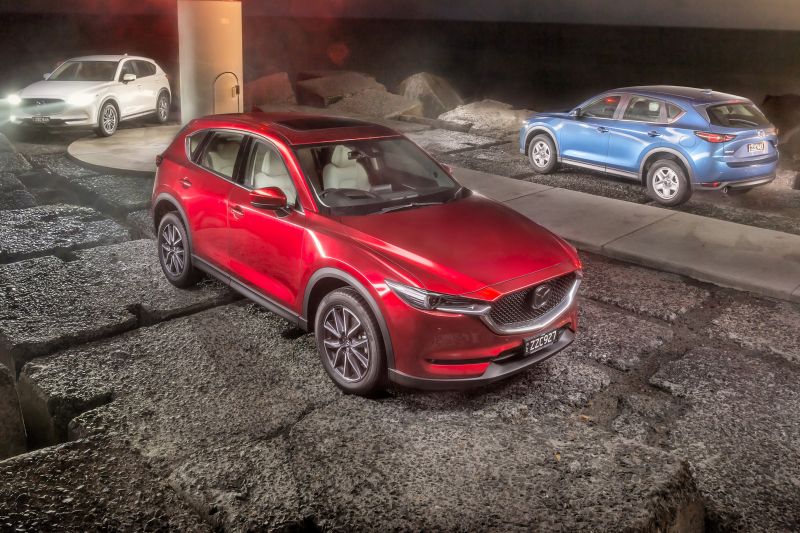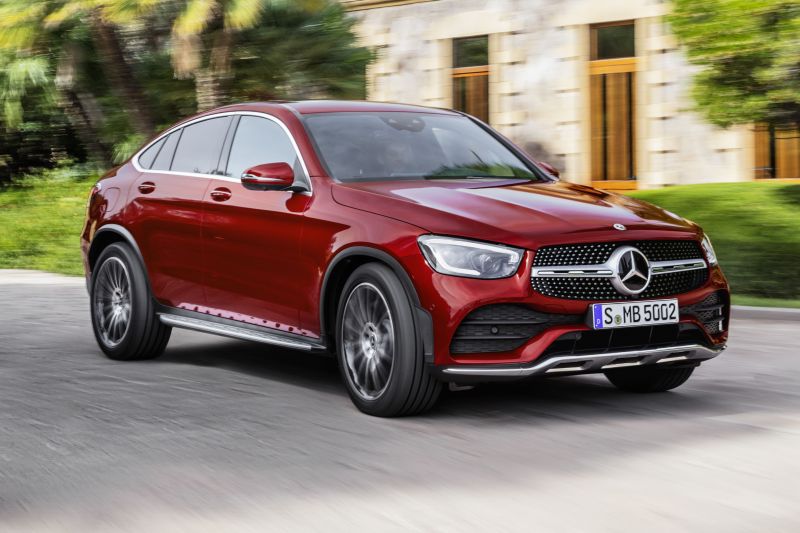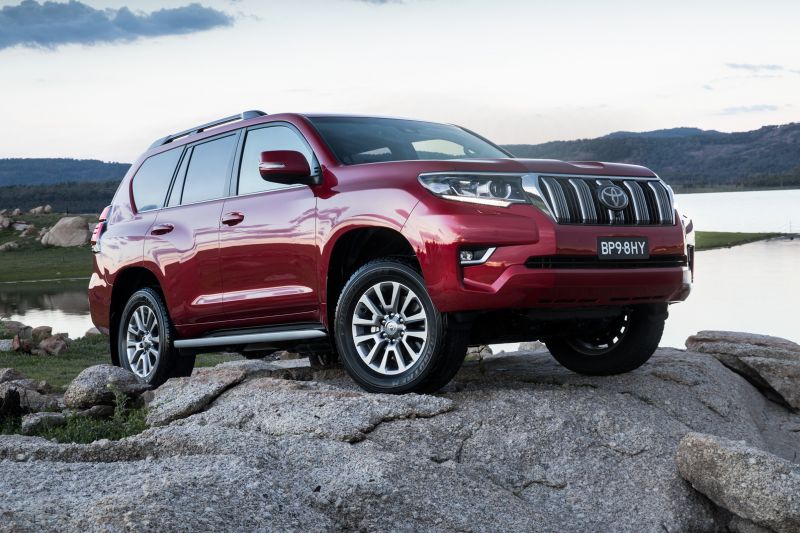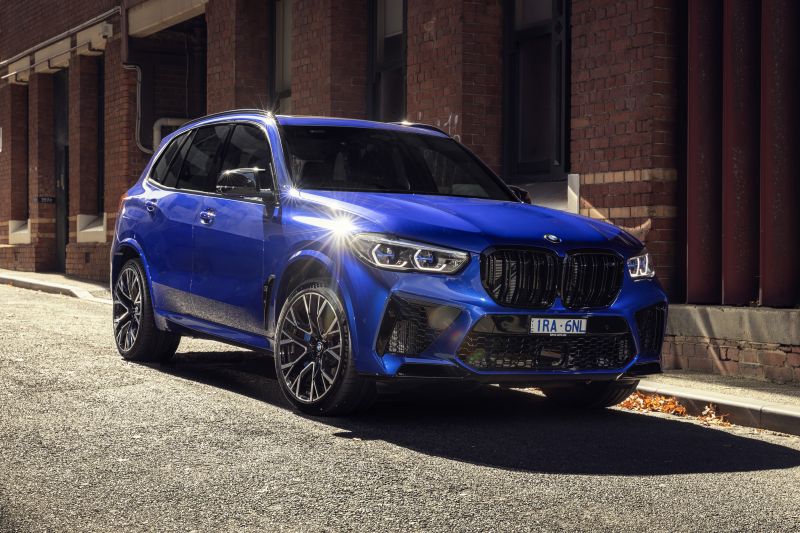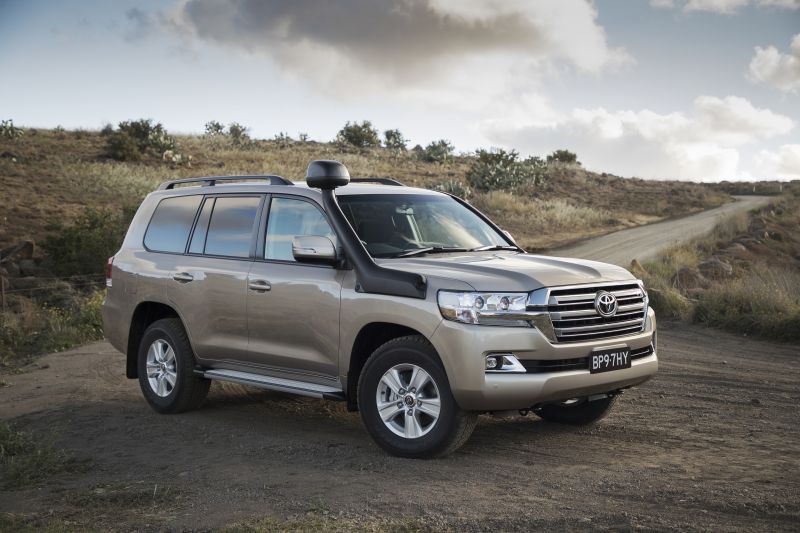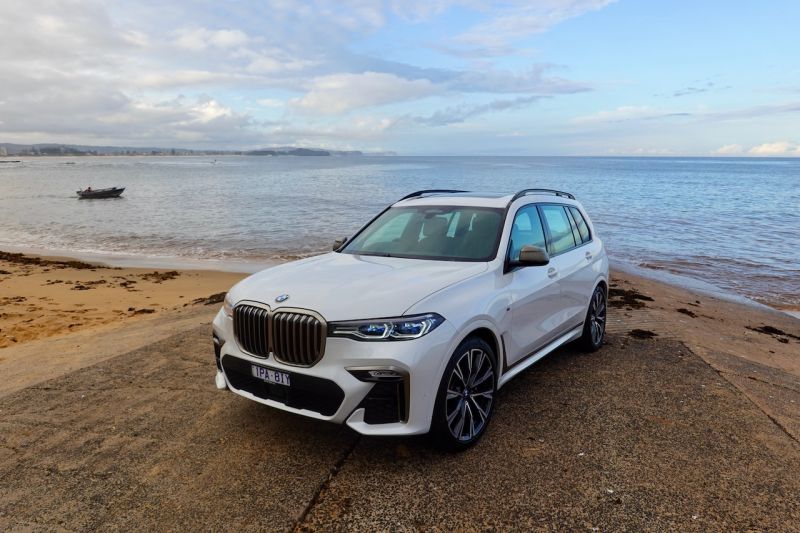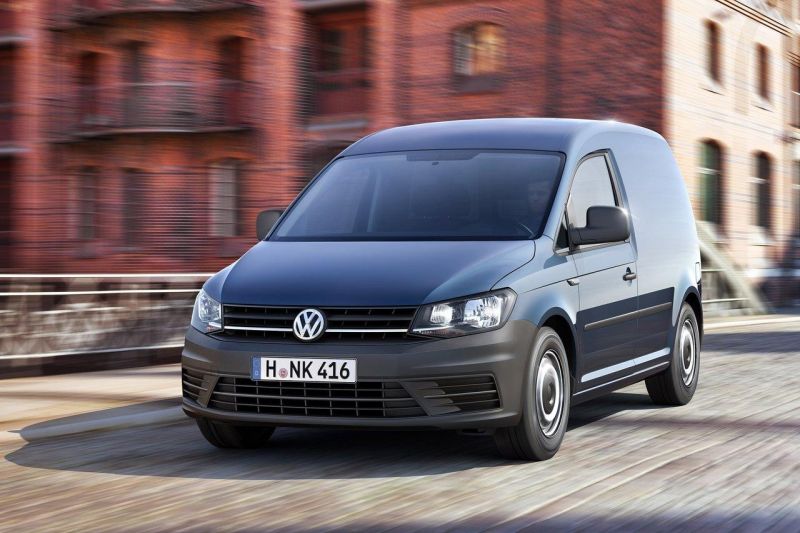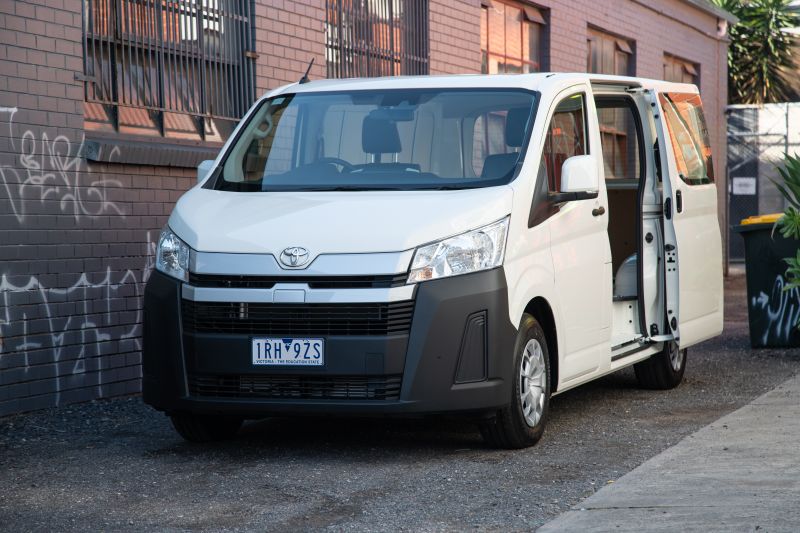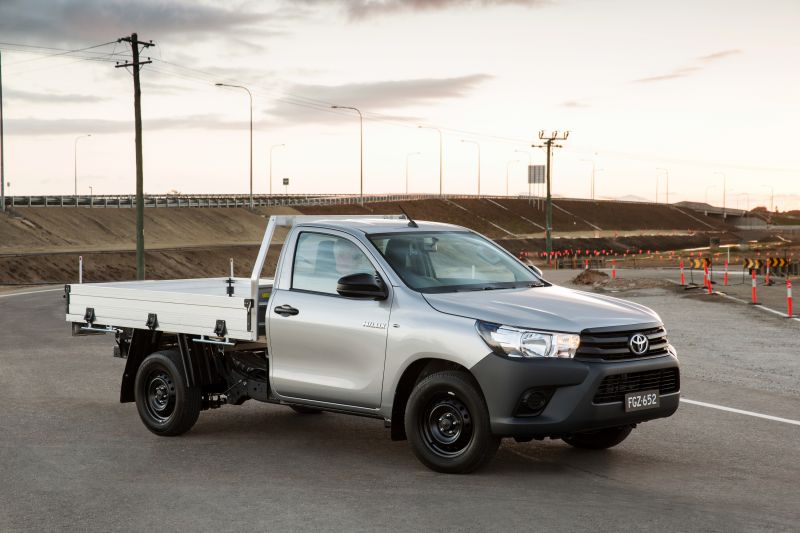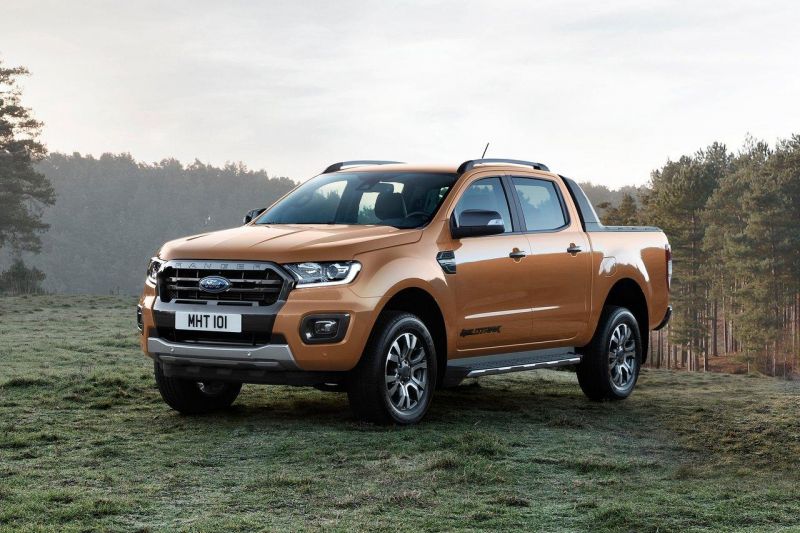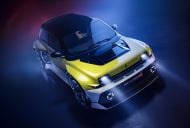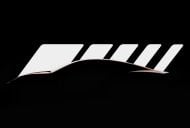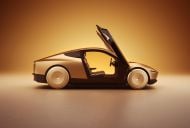Are German branded cars actually made in Germany? The answer is only ‘yes’ sometimes, because the modern automotive industry is increasingly globalised.
Carmakers produce vehicles in multiple different countries around the world, so it may be time to rethink your perceptions.
Here’s where each of 2019’s best-selling models are built.
Micro car: Kia Picanto
At the entry point of the new car market, the Kia Picanto sold 5237 units. It dominates the micro car segment, although the updated Mitsubishi Mirage is now here to give it a run for its money.
The pint-sized Picanto beat the Fiat/Abarth 500 (673) and Mitsubishi Mirage (592) by huge margin in the sales race.
Priced from $14,390 before on-road costs, the hatchback consists of a four-pronged line-up featuring the Picanto S, sporty GT-Line and GT guises, or SUV-designed X-Line model.
It is made in Kia’s Seosan plant in South Korea. The conglomerate recently unveiled a facelift for the Picanto, which is bound for Australia later this year.
Light car: Hyundai Accent
Despite being the best-seller in the city car segment, Hyundai has now ditched the Accent in favour of the Venue SUV. The Korean carmaker sold 9963 Accents in 2019.
The Accent’s sales figures narrowly edged out the Toyota Yaris (9853) and Mazda 2 (8198).
Offered in hatchback and sedan guises, the outgoing model was sold in only one trim level called the ‘Sport’. Pricing started at $15,490 before on-roads with generous drive-away offers to clear out stock.
The light car is manufactured in the Ulsan, South Korean factory. Locally, the Accent has now been replaced by the more expensive Hyundai Venue city SUV.
Small car below $40,000: Toyota Corolla
The Toyota Corolla remained a strong seller in 2019, with 30,468 examples sold last year making it the third-best selling car in the country.
Unlike its small car rivals, it is offered with an optional hybrid powertrain. The Corolla beat out the Hyundai i30/Elantra (28,378) and Mazda 3 (24,939) in its segment.
The Corolla’s sales figures were aided by the launch of the sedan body style, complementing the hatchback. Despite starting at a dearer $23,335 before on-roads than the previous generation, it is still a strong seller.
Australia sources Toyota’s ever-popular small car from its home country in Japan at the Takaoka and Tsutsumi plants.
Small car above $40,000: Mercedes-Benz A-Class
Mercedes-Benz’s entry point into the German luxury sphere found 4689 homes in 2019.
Trailing behind in the small luxury car segment were the Audi A3 (3362) and BMW 1 Series (2269).
Last year also saw the introduction of the A-Class Sedan, alongside the hot AMG A35 hatchback. The standard A180 variant starts from $43,900 before on-road costs.
The Mercedes-Benz A-Class hatch is produced in Kecskemét, Hungary, while the sedan comes from Germany.
The German marque recently introduced the hyper AMG A45 S and plans to expand further with a plug-in hybrid 250e model coming later this year.
Medium car (below $60K): Toyota Camry
Despite decreasing interest in family-sized sedans, Toyota sold an impressive 16,768 Camrys last year.
Its sales figures dwarf rivals such as the Mazda 6 (2612) and Skoda Octavia (1804).
The Camry starts from $28,290 before on-roads and is available with an optional hybrid powertrain, four-cylinder petrol, or gutsier six-cylinder petrol engine.
Not surprisingly, the iconic nameplate is manufactured in Toyota’s Tsutsumi plant in Japan.
Medium car above $60,000: Mercedes-Benz C-Class
On the upmarket end, the Mercedes-Benz C-Class topped the medium-sized luxury segment by selling 6798 units in 2019.
The C-Class got a facelift last year to bring it in line with the marque’s newer offerings. It is available in sedan or wagon body styles, and even offered with performance AMG C43 or C63 S guises.
The range starts off at $65,800 before on-roads.
The BMW 3 Series (3135) and Mercedes-Benz’s own CLA (1424) models sit well below the C-Class in terms of sales.
Australia sources the Mercedes-Benz C-Class (W205) from two different countries. All sedan models, including the base C200, C300 and C300e are produced in a city called East London in South Africa, while wagon variants are manufactured in Daimler’s Bremen plant in Germany.
Large car below $70,000: Holden Commodore
Even with the controversy surrounding the fact the ZB Holden Commodore was no longer locally produced, the iconic nameplate remained the best-seller in the large sedan segment. Last year, 5915 were sold.
While General Motors (GM) has now axed the Holden brand, the Commodore sold more than the Kia Stinger (1773) and Skoda Superb (849).
The Commodore was priced from $33,690 before on-road costs and came with a generous list of standard equipment. It was offered in liftback, wagon, or high-riding Tourer guises.
Since the ZB Commodore is essentially a rebadged Opel/Vauxhall Insignia, it was imported from the Rüsselsheim factory in Germany.
Large car above $70,000: Mercedes-Benz E-Class
A step larger than the C-Class, the Mercedes-Benz E-Class recorded only 1228 registrations in 2019.
But it dominated the large car sales charts, with the BMW 5 Series (964) and Mercedes-Benz CLS (220) behind.
The base E200 sedan kicks off the range from $95,900 before on-roads. Like its smaller sibling, a variety of body style flavours are offered with the E-Class, including sedan, coupe, a lifted All-Terrain wagon, convertible, and hotted-up E53, E63, and E63 AMG S.
All E-Class (W213) variants are from its Sindelfingen, Germany site. A 2020 facelift to the E-Class coupe and cabriolet have already been announced, and will lob here in October.
People mover: Kia Carnival
While families are tending towards SUVs as their default choice, the Kia Carnival reigns supreme in the multi-purpose vehicle (MPV) people mover category, with 6493 sold last year.
The Carnival beat the Honda Odyssey (1684) and Volkswagen Multivan (929) for sales supremacy.
The eight-seater is priced from $43,190 before on-roads. Key standard equipment includes an electric sliding door, four top tether and three ISOFIX tethering points to fit children seats, and autonomous emergency braking (AEB) with adaptive cruise control and lane-departure warning.
The Kia Carnival is imported from the Sohair plant in Gwangmyeong, South Korea. An all new-model is rumoured to be due in 2021.
Sports car below $80,000: Ford Mustang
Even with its three-star ANCAP safety rating, Ford sold a total of 3948 Mustangs in 2019.
It is priced from $50,990 before on-road costs. The Ford Mustang outsold the BMW 2 Series (923) and Toyota 86 (568) in this more affordable sports car class.
The iconic pony car can be had in either coupe or convertible forms, with a 2.3-litre EcoBoost turbo four-cylinder engine making 236kW of power and 448Nm of torque, or a more powerful 5.0-litre naturally-aspirated eight-cylinder petrol producing 339kW and 556Nm.
Both engines are mated to a six-speed manual or optional 10-speed automatic transmissions.
Ford produces all Mustangs in its Flat Rock, Michigan plant in the United States.
Sports car between $80,000 and $200,000: Mercedes-Benz C-Class
The Mercedes-Benz C-Class Coupe and Convertible topped the pricier end of the sports car category, selling 2496 models last year.
Whether in sleek three-door or open-top form, it can be had with standard C200, C300, or high-powered AMG C43 and C63 S models. The former contains a 3.0-litre twin-turbo six-cylinder making 287kW of power and 520Nm of torque.
The flagship C63 S ups the ante with a 4.0-litre eight-cylinder that outputs 375kW and 700Nm. The German marque claims a 0 to 100km/h sprint in just 4.1 seconds for the C63 S.
Unlike the C-Class sedan, all coupe and convertible variants are made in Germany.
Small SUV below $40,000: Mitsubishi ASX
As one of the early small SUVs, the ASX had a head start in one of Australia’s most popular segments. A healthy 20,806 Mitsubishi ASXs were sold last year.
The Mitsubishi ASX has strong competition in the popular small SUV segment. Last year, the Mazda CX-3 (14,813) and Hyundai Kona (13,342) were close behind on registrations.
The small crossover has treated to countless facelifts in its 10-year life, with the most recent being a heavy refresh in 2019. Starting from $23,990 before on-road costs, the latest ASX also brought back the sporty GSR badge on an upper-end model.
Australia sources the ASX from the Mizushima Plant in Kurashiki, Okayama in Japan. Pre-2017 models were made in Okazaki, Aichi, Japan.
Small SUV above $40,000: Volvo XC40
The Swedish carmaker’s entry-point model topped the luxury small SUV class with 2858 sold in 2019.
However, German competitors sit close behind the XC40 in terms of sales – the BMW X1 (2847) and Mercedes-Benz GLA (2562).
The Volvo XC40 is available in three trim grades and only a few options packages. The range starts off ay $46,990 before on-roads for a T4 Momentum model.
Despite Volvo now being owned by Chinese automaker Geely, the XC40 sold in Australia is still manufactured at the Ghent, Belgium factory.
Medium SUV below $60,000: Mazda CX-5
In the hotly-contested medium SUV category, the Mazda CX-5 dominated last year with 25,539 sold.
The also-popular Toyota RAV4 (24,260) and Nissan X-Trail (19,726) are strong contenders.
The Japanese family SUV is priced from $30,980 before on-roads for the base Maxx model, but it’s matched with a rare manual transmission.
A six-speed automatic and all-wheel drive are available, and a comprehensive suite of active safety technologies are standard. Space-wise, the CX-5’s boot measures in at 442L with the seats in place.
The Mazda CX-5 is produced in Mazda’s Hiroshima factory in Japan.
Medium SUV above $60,000: Mercedes-Benz GLC
In the luxury mid-sized SUV segment, the Mercedes-Benz GLC topped the charts with 6847 registered in 2019.
Competing with the GLC are the BMW X3/X4 (6100) and Audi Q5 (4152).
The five-seater is priced from $67,400 before on-road costs for a base GLC200. Stepping up the range brings a punchier GLC300 with all-wheel drive, GLC300 e plug-in hybrid, and sporty AMG GLC 43 and 63 variants.
Unlike the C-Class sedan on which it’s based, all GLCs are imported from Mercedes-Benz’s Bremen plant in Germany.
Large SUV below $70,000: Toyota LandCruiser Prado
Toyota’s stalwart, go-anywhere Prado found 18,335 homes last year in the large SUV category.
Close to the Prado’s sales figures include the smaller Toyota Kluger (11,371) and ute-based Isuzu MU-X (8419).
While it is 13 years-old, the Prado continues to be a popular choice for family buyers wanting a rugged all-rounder.
The range starts at $54,090 before on-roads. Highlights include selectable all-wheel drive, 3000kg braked towing capacity, and 219mm of ground clearance.
Australia receives the Toyota Prado from Tahara, Aichi in Japan.
Large SUV above $70,000: BMW X5/X6
BMW sold 3671 units of its X5 and related X6 coupe last year in the large luxury SUV segment.
The X5 and X6 eclipsed the Mercedes-Benz GLE (2488) and Range Rover Sport (2202) in sales last year.
The standard BMW X5 starts at $99,900 before on-road costs, while the X6 coupe SUV with which it shares its platform costs from $121,900 plus-on roads. Flagship performance X5 M and X6 M Competition variants are also available.
Despite coming from a Bavarian automaker, the X5 and X6 are produced in Spartanburg, South Carolina in the United States.
Upper large SUV below $100,000: Toyota LandCruiser 200
The full-strength Toyota LandCruiser had 13,802 sales in 2019.
The LandCruiser comfortably outsold its only rival, the Nissan Patrol (1951).
Starting from $80,190 before on-roads, the LandCruiser features a 3500kg braked towing capacity, and a 4.5-litre eight-cylinder twin-turbo diesel engine. Like the smaller Prado, it’s available in five- or seven-seat configurations.
Toyota LandCruisers are manufactured at Toyota’s Aichi factory in Japan.
Upper large SUV above $100,000: BMW X7
The seven-seat BMW X7 dominated the upper large SUV segment, selling 608 cars in 2019.
Coming close to the X7 are the Audi Q8 (494) and Lexus LX (419) premium flagship SUVs.
The two-pronged range kicks off at $128,900 before on-road costs. The base xDrive 30d comes with a 3.0-litre inline-six turbo-diesel engine with all-wheel drive, while the flagship M50i is powered by a 4.4-litre twin-turbo petrol.
All BMW X7s are made in South Carolina.
Small van: Volkswagen Caddy
With 1672 sold last year, the Volkswagen Caddy was the most popular entry point to the light commercial vehicle (LCV) segment.
The two-seater Caddy Van starts from $25,840 before on-roads for private buyers in short wheelbase guise, and also comes in a longer wheelbase called the Caddy Maxi Van. To get five seats, a Caddy Maxi Crewvan is offered. Maximum payload is rated at 842kg, and AEB is standard across the range.
The Volkswagen Caddy beat the Renault Kangoo (758) and Citroen Berlingo (112) in the small van segment.
All models are produced in Volkswagen’s Poznań plant in Poland. An all-new Caddy was revealed earlier this year with a sleeker design, and more tech and safety features. It is set to arrive in 2021.
Medium van: Toyota HiAce
Moving up to the medium van LCV category, the Toyota HiAce continues to dominate with 6127 vehicles registered in 2019.
The Toyota HiAce’s sales figures surpassed the Hyundai iLoad (3919) and Ford Transit Custom (2070).
A new-generation HiAce was locally released last year, ditching the cab-over design to bring enhanced safety levels and modern technology.
The entry impost of the iconic nameplate starts from $38,640 before on-road costs, which includes Toyota’s comprehensive suite of safety systems including AEB with cyclist detection, wired Apple CarPlay and Android Auto, and a 3.5-litre petrol V6 as standard.
Stepping up the price ladder nets a more frugal 2.8-litre turbo diesel, six-speed automatic transmission, and a choice of a longer wheelbase SLWB Van.
Australia sources the HiAce van from the automaker’s Inabe and Kakamigahara assembly plants in Japan.
4×2 ute: Toyota HiLux
Consistently Australia’s best selling vehicle overall, it’s no surprise the HiLux topped the 4×2 ute segment by selling 11,324 last year.
The HiLux 4×2 range kicks off from only $21,865 before on-roads for a basic Workmate cab chassis with a 2.7-litre four-cylinder petrol unit and five-speed manual that drives the rear wheels. There’s also double-cab and Hi-Rider variants with diesel power available in the 4×2 range.
The HiLux trumped two-wheel driven ute rivals including the Isuzu D-Max (5116) and Ford Ranger (3956).
Unlike the HiAce van, the Toyota HiLux range is made in the company’s Samrong plant in Thailand.
4×4 ute: Ford Ranger
At the pinnacle of LCVs, the Ford Ranger topped the 4×4 pick-up ute market with a whopping 37,004 sold in 2019.
The Toyota HiLux (36,325) and Mitsubishi Triton (22,681) followed closely behind in the sales charts.
Priced from $42,690 before on-road costs for a cab chassis two-door Ranger XL 4×4, it comes with a 3.2-litre five-cylinder turbo diesel as standard and all-wheel drive.
However, most buyers opt for upper-end trim levels like the double cab XLT, FX4 and Wildtrak. A 2.0-litre twin-turbo four-cylinder mated to a 10-speed automatic transmission is optional.
Like most utes in Australia, the Ford Ranger is manufactured in the Rayong factory in Thailand.
As exclusively reported by CarExpert, the upcoming 2022 Ranger will go plug-in hybrid as the American automaker partners with Volkswagen (instead of Mazda) for its next-generation ute.





